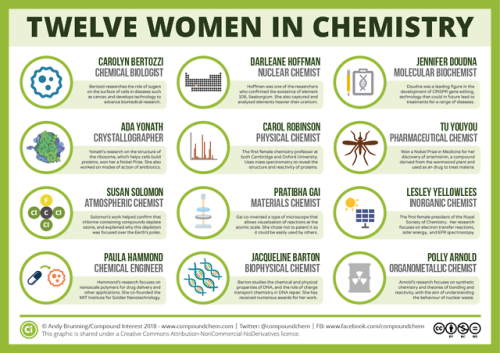NASA Unveils Greatest Views Of The Aurorae Ever, From Space In HD









NASA unveils greatest views of the aurorae ever, from space in HD
“When the free electrons finally find the ions they bind to, they drop down in energy, creating an incredible display of colorful possibilities. Of all of them, it’s the oxygen (mostly, with the strong emission line at 558 nanometers) and the nitrogen (secondary, with the smaller line at a slightly higher wavelength) that create the familiar, spectacular green color we most commonly associate with aurorae, but blues and reds — often at higher altitudes — are sometimes possible, too, with contributions from all three of the major atmospheric elements and their combinations.”
The northern (aurora borealis) and southern (aurora australis) lights are caused by a combination of three phenomena on our world, that make our aurorae unique among all worlds in our solar system:
Outbursts from the Sun that can go in any direction,
Our magnetic field, that funnels charged particles into circles around the poles,
And our atmospheric composition, that causes the colors and the displays we see.
Put all of these together and add in a 4k camera aboard the ISS, and you’ve got an outstanding recipe for the greatest aurora video ever composed. Here’s the in-depth science behind it, too.
More Posts from Contradictiontonature and Others

Quote from Sau Lan Wu, scientist who discovered the #higgsboson. More quotes like this one to inspire you in my I Love Science Journal coming to stores in March. Preorder now on Amazon! #ilovescience #womeninscience #scientificliteracy


Virus carrying DNA of black widow spider toxin discovered
A tiny virus that may sting like a black widow spider.
That is one of the surprise discoveries made by a pair of Vanderbilt biologists when they sequenced the genome of a virus that attacks Wolbachia, a bacterial parasite that has successfully infected not only black widow spiders but more than half of all arthropod species, which include insects, spiders and crustaceans.
“Discovering DNA related to the black widow spider toxin gene came as a total surprise because it is the first time that a phage – a virus that infects bacteria – has been found carrying animal-like DNA,” said Associate Professor of Biological Sciences Seth Bordenstein. He and Senior Research Specialist Sarah Bordenstein reported the results of their study in a paper titled “Eukaryotic association module in phage WO genomes from Wolbachia” published Oct. 11 in the journal Nature Communications.
Sarah R. Bordenstein, Seth R. Bordenstein. Eukaryotic association module in phage WO genomes from Wolbachia. Nature Communications, 2016; 7: 13155 DOI: 10.1038/ncomms13155
DNA related to black widow spider toxin has been found in a bacterial virus. (iStock)
The oval shape in this electron microphotograph is a Wolbachia bacterium that has infected a Nasonia wasp. The small dots in the bacterium are WO phage particles. The inset shows them at a higher magnification. The white arrows in the inset point to the phage tails. The scale bar in the image is 200 nm and the bar in he inset is 100 nm. (Bordenstein Lab / Vanderbilt)




Separation of a highly fluorescent anthranilic acid derivative from the reaction mixture.
The upper organic layer dissolved almost completely my compound from the reaction mixture and could be separated in one step. A good point was that the compound had a really strong fluorescence and if I placed an UV lamp next to the separation funnel it was easily observed that the water phase contained almost none of the title compound.





Neil deGrasse Tyson talking about creationism, science celebrities and kids on National Geographic. Watch the full video here.

TODAY IN SCIENCE: Ada Lovelace Day
Ada Lovelace Day is an international celebration of the achievements of women in science, technology, engineering, math, and all related STEM fields.
The celebration is named in honor of English mathematician Augusta Ada King (1815-1852), Countess of Lovelace, known colloquially as Ada Lovelace. Lovelace, the daughter of Lord Byron, is sometimes considered the world’s first computer programmer for the algorithm she wrote for Charles Babbage’s analytical engine, one of the world’s first mechanical computers. Over the years there have been historical disagreements over the extent of Lovelace’s knowledge of the subject and the originality of the work she published in her article, “Sketch of the Analytical Engine, with Notes from the Translator,“ but Babbage himself seemed to dismiss such future claims in his memoir.
Check out the collection Science NetLinks put together for Women’s History Month for related resources to help all students understand the role women historically have played in the history of STEM development and those they play in current STEM fields.
Learn more.
Image Credit: Alfred Edward Chalon [Public domain], via Wikimedia Commons










TOP TEN MOST DEADLY INFECTIOUS DISEASES
This list is based off of the assumption that the infected individual does not receive medical treatment.
1. Prions (mad cow disease, Creutzfeld-Jakob disease, kuru, fatal familial insomnia): 100%
2. Rabies: ~100%
3. African trypanosomiasis (’African sleeping sickness’): ~100%
4. Primary amoebic encephalitis caused by Naegleri fowlerii (’the brain-eating amoeba’): ~100%
5. Yersinia pestis, specifically the pneumonic or septicemic subtype (’the black plague’): ~100%
6. Visceral leishmaniasis: ~100%
7. Smallpox, specifically the malignant (flat) or hemorragic subtype: 95%
8. Ebola virus, specifically the Zaire strain: 83-90%
9. HIV: 80-90%
10. Anthrax, specifically the pulmonary subtype: >85%

5 sleep disorders you didn’t know existed
Ever shouted at your partner while you slept, or woken up unable to move? From apnoea to exploding heads, here are some strange things that go bump in the night.
Sleep apnoea
A surprisingly common condition in which you stop breathing for 10 seconds or more as you sleep. The lack of oxygen causes your brain to wake you up, or pull you into much lighter sleep. Either way, it can have a profound effect on the quality of your sleep – and that of any bedfellow, as it’s often accompanied by loud snoring.
Sleep paralysis
A terrifying experience, where the body, which naturally becomes paralysed duringREM sleep, is still paralysed when you wake. You are fully conscious but cannot move or speak, sometimes for several minutes. Some people also feel as if they are choking or their chest is being crushed and they may have visual hallucinations. The condition can be exacerbated by sleep deprivation, some drugs, and disorders such as sleep apnoea.
Hypnagogic jerks
Those jumps or twitches you experience as you nod off, often accompanied by the sensation of falling. The cause remains a mystery. One idea is that you start dreaming before your body becomes paralysed. Another is that the twitches are a by-product of your nervous system relaxing as you drift off.
REM sleep disorder
If you’ve ever punched or shouted at your partner in the night, only to remember nothing next morning, you may have been in the grip of this condition. Here, the body isn’t fully paralysed during REM sleep, so people act out their dreams. Thistends to happen only with bad dreams.
Exploding head syndrome
This entails the sensation of a loud noise, like an exploding bomb or a gunshot, as you drift off or wake up. It affects about 1 in 10 of us and it tends to start around age 50. Nobody knows what causes it– perhaps physical changes in the middle ear, or a minor seizure in the brain’s temporal lobe. Despite its name, the condition is harmless.
Image Credit: Toby Leigh
Source: New Scientist (By Catherine de Lange)


For International Women’s Day, here are 12 women from chemistry history: wp.me/p4aPLT-2ra and 12 from chemistry present: wp.me/p4aPLT-5w7

The Hubble Space Telescope captured this picture of the wispy remains of a supernova explosion. The dust cloud in the upper center of the picture is the actual supernova remnant. The dense concentration of stars in the lower left is the outskirts of star cluster NGC 1850. Full resolution picture here. More info here. Credit: NASA, ESA, Y.-H. Chu (Academia Sinica, Taipei)

Memory Competition
Most of the brain contains cells that no longer divide and renew. However, the dentate gyrus, nestled within the memory-forming centre of the brain (the hippocampus) is one of the few sites where new cells continue to form throughout life. As a person ages, there is an ever-increasing struggle for these new dentate gyrus neurons (coloured pink) to integrate with existing older neurons (green) because the latter already has well-established connections. This may be why learning and memorisation becomes more difficult as a person gets older. Scientists have now found that by temporarily reducing the number of dendritic spines – branches of neurons that form connections with other neurons – in the mature cells, the new cells have a better chance of functionally integrating. Indeed, in live mice, briefly eliminating dendritic spines boosted the number of integrated new neurons, which rejuvenated the hippocampus and improved the animals’ memory precision.
Written by Ruth Williams
Image courtesy of Kathleen McAvoy
Center for Regenerative Medicine, Massachusetts General Hospital, Boston, MA, USA
Copyright held by original authors
Research published in Neuron, September 2016
You can also follow BPoD on Twitter and Facebook
-
 thedeadkings liked this · 1 year ago
thedeadkings liked this · 1 year ago -
 muscularcat reblogged this · 4 years ago
muscularcat reblogged this · 4 years ago -
 kimkatbee11 reblogged this · 4 years ago
kimkatbee11 reblogged this · 4 years ago -
 kimkatbee11 liked this · 4 years ago
kimkatbee11 liked this · 4 years ago -
 numbera1001 reblogged this · 5 years ago
numbera1001 reblogged this · 5 years ago -
 riceli liked this · 6 years ago
riceli liked this · 6 years ago -
 loser5550123 liked this · 6 years ago
loser5550123 liked this · 6 years ago -
 astraxolotlgirl reblogged this · 7 years ago
astraxolotlgirl reblogged this · 7 years ago -
 astraxolotlgirl liked this · 7 years ago
astraxolotlgirl liked this · 7 years ago -
 titaniumvixen reblogged this · 7 years ago
titaniumvixen reblogged this · 7 years ago -
 titaniumvixen liked this · 7 years ago
titaniumvixen liked this · 7 years ago -
 t-raytrahan reblogged this · 7 years ago
t-raytrahan reblogged this · 7 years ago -
 t-raytrahan liked this · 7 years ago
t-raytrahan liked this · 7 years ago -
 alux-ulkan liked this · 7 years ago
alux-ulkan liked this · 7 years ago -
 earth-and-space reblogged this · 7 years ago
earth-and-space reblogged this · 7 years ago -
 earth-and-space liked this · 7 years ago
earth-and-space liked this · 7 years ago -
 sayaman7 liked this · 8 years ago
sayaman7 liked this · 8 years ago -
 rabid-firefly liked this · 8 years ago
rabid-firefly liked this · 8 years ago -
 northmanthor reblogged this · 8 years ago
northmanthor reblogged this · 8 years ago -
 northmanthor liked this · 8 years ago
northmanthor liked this · 8 years ago -
 yolkbread reblogged this · 8 years ago
yolkbread reblogged this · 8 years ago -
 scottodomain liked this · 8 years ago
scottodomain liked this · 8 years ago -
 misericorde06 reblogged this · 8 years ago
misericorde06 reblogged this · 8 years ago -
 therewas-a-girl reblogged this · 8 years ago
therewas-a-girl reblogged this · 8 years ago -
 vvasted-days liked this · 8 years ago
vvasted-days liked this · 8 years ago -
 retrogekko reblogged this · 8 years ago
retrogekko reblogged this · 8 years ago -
 korokage liked this · 8 years ago
korokage liked this · 8 years ago -
 redundantz liked this · 8 years ago
redundantz liked this · 8 years ago -
 jackadamsonwrites-blog liked this · 8 years ago
jackadamsonwrites-blog liked this · 8 years ago -
 freyjawriter24 liked this · 8 years ago
freyjawriter24 liked this · 8 years ago -
 thejollywriter reblogged this · 8 years ago
thejollywriter reblogged this · 8 years ago -
 phantasymist reblogged this · 8 years ago
phantasymist reblogged this · 8 years ago -
 phantasymist liked this · 8 years ago
phantasymist liked this · 8 years ago -
 the960writers reblogged this · 8 years ago
the960writers reblogged this · 8 years ago -
 contradictiontonature reblogged this · 8 years ago
contradictiontonature reblogged this · 8 years ago -
 sweet-roar reblogged this · 8 years ago
sweet-roar reblogged this · 8 years ago -
 aksarah liked this · 8 years ago
aksarah liked this · 8 years ago -
 effervescentenigmatic reblogged this · 8 years ago
effervescentenigmatic reblogged this · 8 years ago
A pharmacist and a little science sideblog. "Knowledge belongs to humanity, and is the torch which illuminates the world." - Louis Pasteur
215 posts